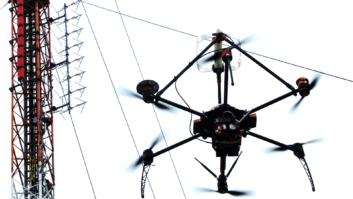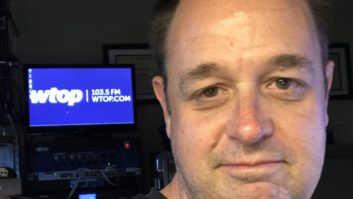
Fig. 1: The silicon-controlled rectifier One major aspect of development in broadcast transmitter technology and power electronics is in the area of power control.
On the traditional transformer, we often dealt with the simpler full-wave and half-wave rectifier circuits; today, the switching power supply is the norm. Back then, we dealt with heavy 60 Hz transformers, but now we deal with lightweight but high-energy power supplies switching at the kHz frequency range.
The same is true with power control systems. This article focuses on repair of a power controller found in many radio and TV transmitters.
Fixing your station’s major electronic equipment brings both fun and anxiety in the process. These days, we more often deal with fixing modules, be it an RF power module or a power supply module. It may be easier to send the bad module to the manufacturer, but if the warranty expires, we probably have to work on it.
Besides, where is the fun in just putting the item in a box and calling the delivery guy to pick it up? The fun is when you learn and make some discoveries yourself.

Fig. 2: AC voltage controlled by an SCR. Voltage and current will not pass to the load until the gate is triggered by a positive voltage. THE SILICON-CONTROLLED RECTIFIER
One device used in power control is the silicon-controlled rectifier. The SCR is a three-terminal device (see Fig. 1). Allow me to refresh you with the basics. The SCR has three terminals: cathode, anode and gate.
The device can be turned on by a trigger voltage at the gate. Once there is current from anode to cathode, however, it cannot be turned off by a negative trigger voltage at the gate. It can only be shut off by bringing the anode to cathode current to zero.
A fascinating thing happens when we use the SCR to control AC (see Fig. 2). The positive half cycle of a sine wave goes up and goes down by itself. If we trigger it at the start of the positive half sine wave, the SCR automatically will turn off by itself at the end of the positive half cycle. If the gate trigger voltage is applied at every beginning of the positive half cycle, then the half sine wave is delivered to the load.
Notice that if we can set the trigger pulse at any point between 0 and 180 degrees, then we can control the voltage getting into the load. Notice as well that the load waveforms are pulsating DC (see Fig. 3).

Fig. 3: The effect of changing the phase of the trigger signal on voltage and current If we parallel another SCR but invert its connection in such a way that the cathode of the second SCR connects to the anode of the first SCR and vice versa, the full sine wave can then be controlled (see Figs. 4 and 5).
THREE-PHASE POWER CONTROLLER FAILURE
The power controller we will focus on is a three-phase SCR controller rated 480 VAC and 50 amps. The control range of this controller is from 0 to 98 percent of the line voltage. It provides AC power to the big transformers of the DC power supply. These controllers are commercially available and are not made by the transmitter manufacturer. Each controller is loaded at about 12.6 kW, which translates to about 16 amps at 460 VAC. There are three of these units for the broadcast transmitter. The controller uses an SCR pack semiconductor, Semikron SKKT92, which have two SCRs internally connected in one package. The data sheet is shown below in Fig. 6.
The problem arose when we discovered an error in one of our transmitters. The transmitter indicated “shorted SCR” on its front-panel alarm. We checked the manual and called the manufacturer regarding the problem. They then gave us a checklist of static resistances for different points in the controller (see Fig. 7 for schematic). Despite the transmitter indicating a short, we found the three SCR packs to be OK.
The controller manufacturer did not offer any more assistance beyond the static checks.

Fig. 4: Back-to-back SCRs result in an AC waveform.

Fig. 5: AC waveform through dual SCRs So we were left with figuring this out on our own.
BUILD YOUR OWN TEST BED
I like to check a module outside the transmitter if at all possible. In this case, I needed three 480 V transformers and a three-phase load. Fortunately, we had a few 240V/13V transformers that were part of unused charging equipment that powers the old microwave systems (see Fig. 8).
The manual specifies that there should at least be 1A of load current in order to test the functionality of the controller. Assuming the power factor = 1, the load needed for each phase would be about 277 W. We do not have resistors this hefty, so the next best thing was to get some heating elements. I found some cheap heating coils from eBay that were good enough for the job (see Fig. 9).
I connected two of the 240 VAC transformers in series to make up for one 480 V phase and then connected all the transformers in a delta configuration. After all the connections were set, sure enough the fuse blew up when power was applied. It was loud and quick indicating a dead short. We isolated the problem to be coming from load 2 and 3.
BACK TO THE SCHEMATIC
At this point, some analysis was in order. Looking at the waveforms created above, a single SCR creates a pulsating DC. So, if two SCRs are connected back to back and one of them fails (or if there is no firing signals in one of them), there would be a DC current on the load. DC on the primary winding of the transformers is really bad because the load for the DC current is a dead short. This is the crucial point in the troubleshooting process. One of the SCR pair on either load 2 or load 3 was not getting the firing signals properly.
Fig. 6: Data sheet with specifications for dual SCR package made by Semikron, the SKKT92
(Click to Enlarge) I went on to check the firing circuit. The gate firing circuit is usually isolated from the main low-voltage circuits because, as in this case, the cathode-anode of the SCR is at 480 VAC. The power controller board is powered by these really cute three-phase 480/17 V step-down transformers (see Fig 10). The isolation devices between the main board and the firing circuit are HCPL4504 high-speed optocouplers (see Fig. 11 for complete schematic). I did not bother much in checking the main board. My main objective was to see the actual waveforms at the input to the optocouplers. The input of these optocouplers is connected to a multiplexer. With a dual trace scope, I checked the pulses at the input of the optocouplers and found them normal.

I then looked at the actual firing voltages getting into the SCR gates. The scope cannot be used at this point because the firing circuit is floating at 480 VAC so I used a DC voltmeter instead. These are the results:

The threshold voltage of the SCR gate is 3V and clearly there is problem with load 3. One of the pair is off while the other one is barely turning on. The problem then narrowed down to the isolated portion of the gate firing circuit of SCR 3.
The isolated section of the firing circuit is electrically separated from the main transmitter controller board by the optocouplers. Pictured in Fig. 12 is the isolated section that controls one of three SCR pairs. U5 and U6 are the optocouplers for this circuit. The top and bottom circuits are identical, so I will focus only with one of them.
Power is provided to the circuit by the 17 VAC coming from the three-phase step down transformer. Diode D5 (bottom circuit) and capacitor C17 creates a half wave rectified DC supply. The –VCC from this supply powers the switching transistor Q5 and regulator VR5. VR5 provides the VCC for the optocoupler U5.
Signal from the main board drives the optocoupler, which drives Q5. Q5 fires up the SCR. Capacitor C17 failed and because this is the DC supply filter, the DC supply becomes unstable and reduced the voltage to a much lower DC level because half the time it is at 0 VDC. This problem made both the optocoupler and switching transistor unstable, resulting in a very low gate to cathode voltage of half the SCR pair. This in turn caused DC current to be delivered to the load transformers.


Fig. 7: Power control circuit schematic showing three-phase connection and SCRs, which feed three-phase wye input AC transformer. (Click to Enlarge)Fig. 8: Surplus 240 V transformers provided a load for our homemade power controller test bed.

Fig. 9: Heating elements acquired from eBay to dissipate enough load current to test the power controller properly

Fig. 10: Three-phase step down transformers to power main board and firing circuit Fig. 11: Complete schematic of power control board showing isolated trigger inputs. (Click to Enlarge) I also noted that the caps are very close to the transistor heat sink, which is hot in normal operation. This may have caused the caps to dry up prematurely. A small cooling fan would have prevented this problem.

After replacing the caps, the trigger voltages went up to its normal level. I put all of it together again and connected the load transformers. There were no more shorts and all the current and voltages were back to normal.
A SUCCESSFUL REPAIR
In our line of work, being resourceful surely helps in troubleshooting equipment, especially in times of meager financial resources. Basic troubleshooting procedure, like isolating the problem to a subsystem or module, is also a good help. There is also a need for some hours of reading to make sure that we understand the circuit and the devices that we are working on.

Fig. 12: Circuit card with optocouplers on power controller board
In all of these, safety is paramount in every step; it will not hurt double-checking each connection before we power up. The fun of discovery ends here — building your own test bed at high voltage is a serious business. What a way to have some cardiac exercise, hearing those loud popping noises from a blown fuse at hundreds of amperes!
John Marcon, CBTE, CBRE, is an engineer at Victory TV Network.












